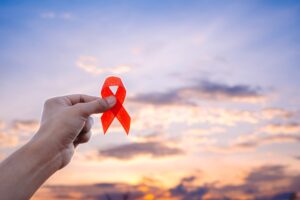Discovering your true identity is no small feat. In fact, many people go through life pretending to be something they’re not. And while finding your real self is never easy, it’s even more difficult for transgender and intersex people experiencing gender dysphoria. In fact, gender dysphoria is linked to substance abuse and other mental health challenges.
The American Psychiatric Association defines gender dysphoria as the “psychological distress that results from an incongruence between one’s sex assigned at birth and one’s gender identity.”
In simpler terms, someone with gender dysphoria (usually someone who identifies as transgender or intersex) feels like they were born in the wrong body. They may also feel like their thoughts, feelings, and sense of self don’t align with their assigned sex.
This sense of living in the wrong body can contribute to poorer mental health outcomes like anxiety, depression, and substance abuse.
Read on to learn more about gender dysphoria and what impact it has on substance abuse.
What Are The Symptoms of Gender Dysphoria & How Is It Diagnosed?
Most people suffering from gender dysphoria realize they’re different at an early age—usually between two and four years old. At this stage, children with gender dysphoria may show a preference for clothes or toys typically belonging to the opposite gender.
On one hand, cross-gendered play is normal and doesn’t indicate that a child is experiencing gender dysphoria. On the other hand, a child who repeatedly expresses the desire to look like and live as a member of the opposite sex for six months or more may be diagnosed as gender dysphoric.
As they grow older, children with gender dysphoria may experience anxiety, depression, and trouble maintaining relationships if they don’t receive adequate support.
In most cases, a gender dysphoria diagnosis comes during childhood. However, some individuals aren’t diagnosed until puberty or later. For some, the diagnosis represents a continuation of gender dysphoria that started in childhood or early adolescence. For others, symptoms of gender dysphoria may gradually appear in early to mid-adulthood.
Adults with gender dysphoria may display symptoms of anxiety or depression. In addition, they may dress or act like members of the opposite gender. Some also express a desire to change their biological and sexual characteristics via surgery.
What Causes Gender Dysphoria?
For the time being, the exact cause of gender dysphoria is unknown. And there’s a lot of debate about the possible origins. In all likelihood, there are probably a number of different factors contributing to gender dysphoria. That being said, recent studies suggest that hormonal influences during gestation in the womb may be a contributing factor.
In these cases, hormones that trigger the development of sex and gender may work improperly on the brain, gonads, and genitals. This can lead to variations between them.
In other words, a fetus’s sex (determined physically by the gonads and genitals) could be male, while the gender (determined by the brain) could be female.
The mechanics of this process remain mostly unknown. But some researchers suggest additional hormones in the mother’s system or a fetal insensitivity to hormones (androgen insensitivity syndrome) contribute.
Other rare conditions like congenital adrenal hyperplasia (CAH) and intersex conditions may also result in gender dysphoria.
With CAH, a female fetus’s adrenal glands (the two small glands located above the kidneys) produce high levels of male hormones. As a result, the female genitals become enlarged. In some cases, the genitals are so enlarged that the baby is thought to be male at birth.
What’s The Relationship Between Gender Dysphoria & Substance Abuse?
By itself, gender dysphoria may not trigger substance abuse. However, when combined with stressful life experiences like minority stress, familial rejection, bullying, or discrimination, gender dysphoria may contribute to the development of a substance use disorder.
Indeed, studies find that people with gender dysphoria are 2.5 times more likely to use cocaine and methamphetamines. They’re also twice as likely to abuse prescription pain medication.
People suffering from gender dysphoria may use substances as a substitute for the acceptance, understanding, and equality that’s lacking in their lives. Substances can also act as an escape from daily stressors.
While drugs and alcohol do provide temporary relief, the effects only last as long as the high. Once the substance wears off, users often face even greater anxiety and depression than they did prior to using substances. Over time, these substances may lead to dependence and addiction.

What’s Wrong With (Most) Substance Abuse Treatment Programs?
It’s estimated that 72% of people who use drugs or alcohol will eventually seek treatment for their substance abuse disorder. For now, there’s no hard data on how many transgender and intersex people seek substance abuse treatment. However, researchers estimate that most people in these groups eventually do seek treatment.
That’s the good news. The bad news is that substance abuse treatment often fails people with gender dysphoria. That’s because people with gender dysphoria may experience stigma, discrimination, and harassment while in treatment.
In some cases, it comes in the form of blatant name-calling. In other cases, it comes as violence from other clients. But more often than not, transgender people are ignored, misunderstood, or feel out of place in traditional treatment centers.
That’s because a lot of treatment centers advertise themselves as LGBTQ-friendly without having the knowledge, training, or lived experience of being LGBTQ. In fact, while a majority of mental healthcare providers report both high knowledge and acceptance of transgender and intersex people, evidence suggests that 86% of substance abuse counselors have no training about transgender issues.
For some, this might mean a lack of experience administering hormones, using incorrect pronouns, or not having gender-neutral bathrooms. As a result, transgender clients may feel uncomfortable, judged, or unsafe. Not surprisingly, these negative experiences mean that many people with gender dysphoria leave treatment prematurely.
How Is La Fuente Different From Other Treatment Centers?
At La Fuente Hollywood Treatment Center, we believe that only specialized LGBTQ substance abuse treatment, administered by trained professionals, is effective when caring for people with gender dysphoria.
As one of the few LGBTQ-affirmative substance abuse treatment centers in the United States, we’re dedicated to helping those with gender dysphoria overcome their addiction.
We’re far from perfect, but we’re doing everything possible to become a leader in substance abuse treatment for those with gender dysphoria. To that end, we’re constantly educating ourselves and those we come in contact with.
If you’d like to learn more about treating transgender and intersex clients, check out a few of our resources:
- The ABCs of LGBTQIA (glossary)
- Best practices in transgender substance abuse treatment (article)
- Differences in substance abuse rates between transmen and transwomen (article)
And if you’d like to learn more about our addiction treatment center located in Los Angeles, California, please fill out the form below. A member of our staff will contact you within 24 hours.





